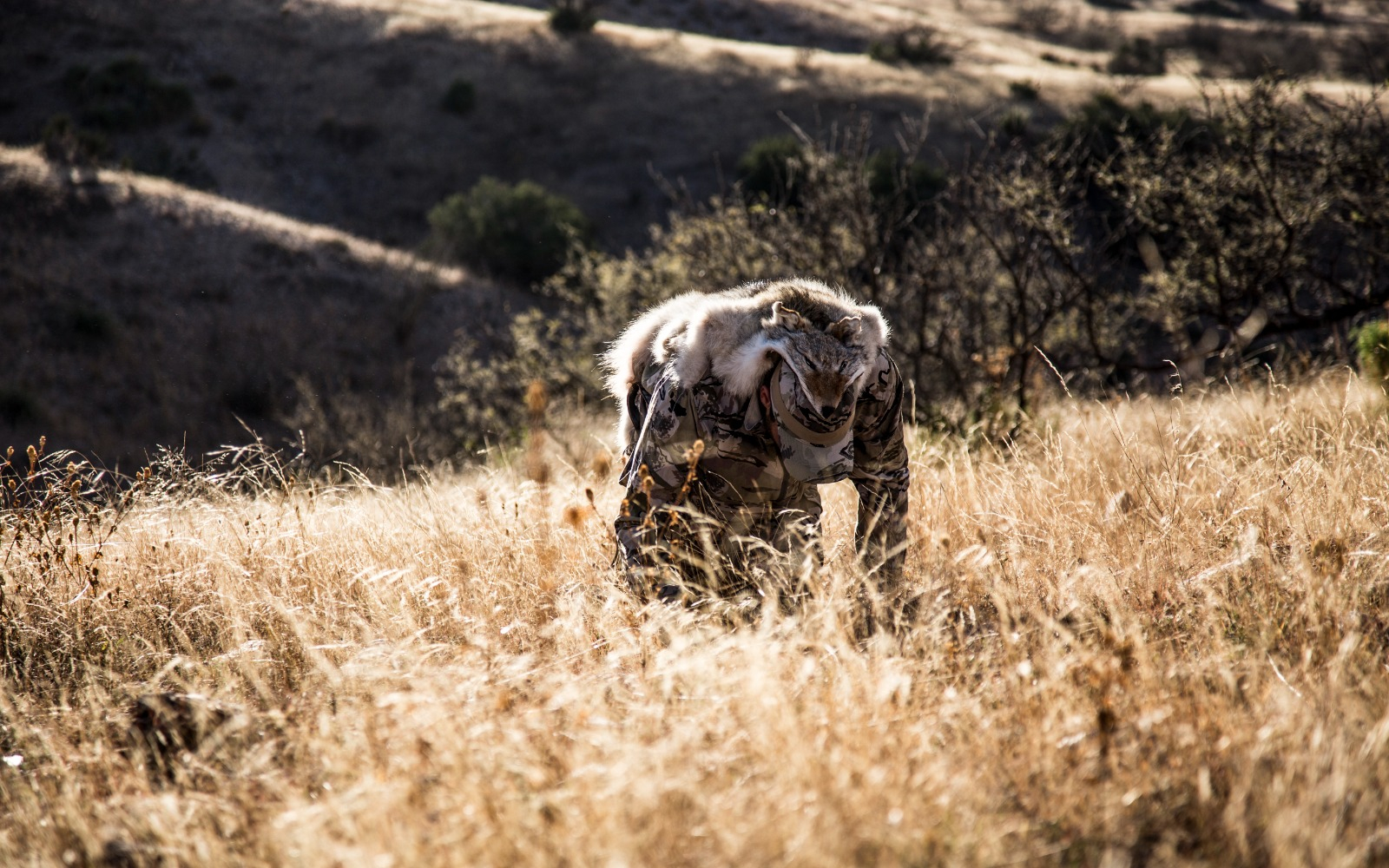
NOTICE: Certain links on this post may earn a commission for Western Hunter Magazine from Amazon or our other affiliate partners when you make a purchase. Thank you for your support.
Three Primitive Hunting Tactics you Should Try
Hunting tools have changed a lot since early man, but have the hunting tactics?
Okay, so we aren’t running around in a loincloth with spears chasing mammoths, or stalking buffalo on the prairie with a hand-knapped arrowhead, but should we discount the techniques that worked so long ago? Are we in fact still using the same hunting tactics, only modernized? The following three tips come straight out of the primitive man’s playbook, but they still work like a charm…with a few upgrades, of course.
The Disguise
George Catlin spent his life in the early 1800s out West chronicling the Native Americans’ vanishing way of life through both writing and paintings. One such painting depicts Native Americans disguising themselves as wolves. The bison knew that the best way to avoid being killed by a human was to run. The exact opposite was true for wolves; wolves only attacked running bison, so by standing their ground, the buffalo had a higher chance of staying safe. The native hunters played to this by masking the human outline and disguising themselves as animals.
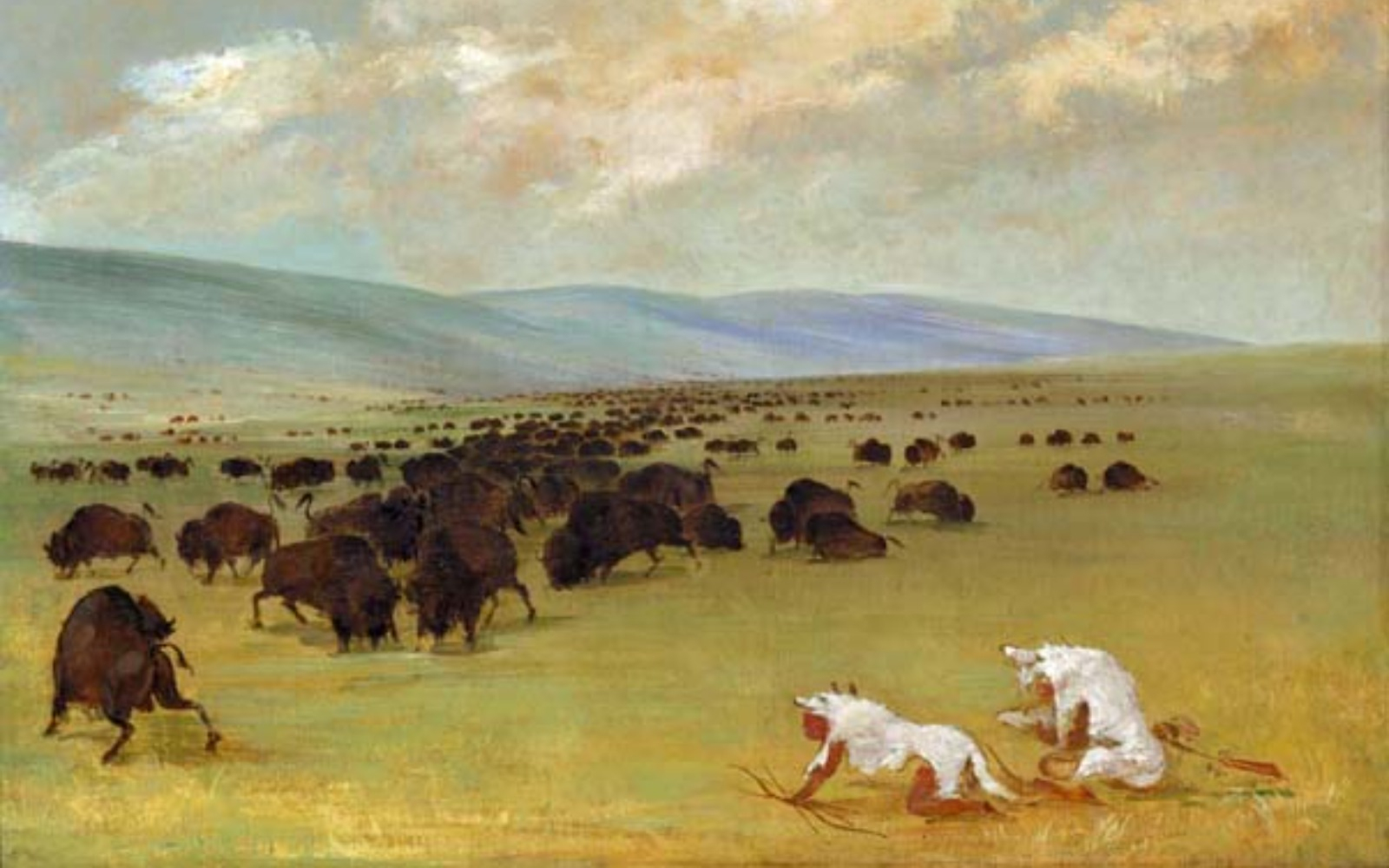
In Catlin’s Letter—No. 31. MOUTH OF TETON RIVER, UPPER MISSOURI, first published in 1844, he writes, “The poor buffaloes have their enemy man, besetting and besieging them at all times of the year, and in all the modes that man in his superior wisdom has been able to devise for their destruction. They struggle in vain to evade his deadly shafts when he dashes amongst them over the plains on his wild horse—they plunge into the snow-drifts where they yield themselves an easy prey to their destroyers, and they also stand unwittingly and behold him, unsuspected under the skin of a white wolf, insinuating himself and his fatal weapons into close company, when they are peaceably grazing on the level prairies, and shot down before they are aware of their danger.”
I’ve actually tried similar hunting tactics by disguising myself with a coyote skin to sneak in on a bison. It worked! I admit this is a little “out there”, and I wouldn’t suggest crawling around as one of the most despised creatures in the Rocky Mountain West for obvious safety reasons. However, there are other ways to implement disguises as a hunting tactics that seems more conventional.
Cow silhouette
Stalking behind a cow-shaped silhouette is a disguise that can work on antelope, deer, and even elk, although antelope seem to be the most susceptible.
Cattle are prevalent in most areas of the West, so it’s an accepted visual. However, the human bipedal outline is ominous and distinguishable from the rest of the animal kingdom, so breaking that form with something familiar makes sense, especially when there isn’t a lot of cover to be had.
I’ve tried the cow decoy multiple times with success, as well as having the animals shy away. The main drawback is it’s easy to spot and if they don’t like it, then it’s “game over”. If you’re going to try it, you have to commit. Just like the native hunters disguised as wolves, if you’re going to be a beef cow, then go for it, knowing that if it spooks them it’s worth the gamble to you. The benefit is that in more open country, you give yourself an opportunity to move unnoticed and get closer to animals that would be difficult to stalk otherwise.
The key to getting this decoy to work is to flank whatever animal you’re trying to get close to. It works best when the animal you’re stalking can see it from a long way out and has time to get used to the idea that a cow is there.
Once the animal has seen the cow, move at a slow and constant rate. Stopping and glassing or peeking around the decoy messes up the illusion. If you’re stalking like a predator, then you’re going to look like a giant black cow predator. Instead, you have to walk like a cow would.
To plan your approach, pick two points where it looks like you will be just strolling by. This allows the animal to get used to you. It also gives you a place to pick out and pre-plan for a shot.
A friend of mine used the cow to cover the distance on an antelope with his girlfriend last season. The decoy not only worked but also caused the buck to run at them. This was possibly out of curiosity or an attempt to spook the cow out of his territory. Either way, the disguise worked and they got their buck at point-blank range.
Same species decoys/hats/suits
I’ve also used an antelope decoys as similar hunting tactics to stalk within bow range of a buck or cross through an opening on a stalk to better cover. When using a decoy that matches the same animal you’re hunting, the principle is the same… blend in plain sight as something other than a human.

For archery hunters, there have also been recent additions to the market in deer and antelope head hats and similar colored shirts. Essentially, it’s a costume resembling what you’re hunting. In Alaska, goat and sheep hunters have been employing this for years, wearing whites to attract Dall sheep and mountain goats.
Wearing a decoy suit is far from a new idea. There are accounts from John Smith of the Powhatan Indians using deer hides with a buck head attached for stalking in on whitetail bucks during the rut. These hunting tactics were commonplace amongst various tribes.
Aside from feeling completely ridiculous wearing the costume, it does have its merits. The trouble is animals know their own species much better than other species, so you have to really nail your getup.
I’ve used the antelope hat on a few occasions. It seems to work best when you have the sun at your back, are in close range, or not moving a lot. Animals can distinguish the human gait apart from four-legged animals and are not easily convinced if you walk at them from a long way off. The same can be said for stalking behind a silhouette decoy.
Even without a decoy or suit, we can take a page out of the primitive hunter’s handbook and break up our outline. There are many times that crossing in sight of the animal is necessary, but there are ways to not look obvious. When doing this, I prefer to walk bent over, with my pack flipped around on my belly. If it’s impossible to stay out of sight, or it’s too far and impractical to crawl, this is the most ungulate-looking outline at a distance. It allows you to keep your back more horizontal, and it gives your body a blockier, horizontal shape more consistent with other non-threatening species, especially at a distance. Although the animals may see you, it doesn’t put them on high alert as quickly
Lie in Wait: the Ambush
Around 6,000 years ago, the Desert Archaic People of the Great Basin established summer hunting camps in the high alpine mountains surrounding the desert floor. I was fortunate enough to run into an archeologist group as they were investigating these sites. One of the most fascinating things to me, aside from the age the camps were established, was the early peoples’ use of blinds for hunting bighorn sheep.
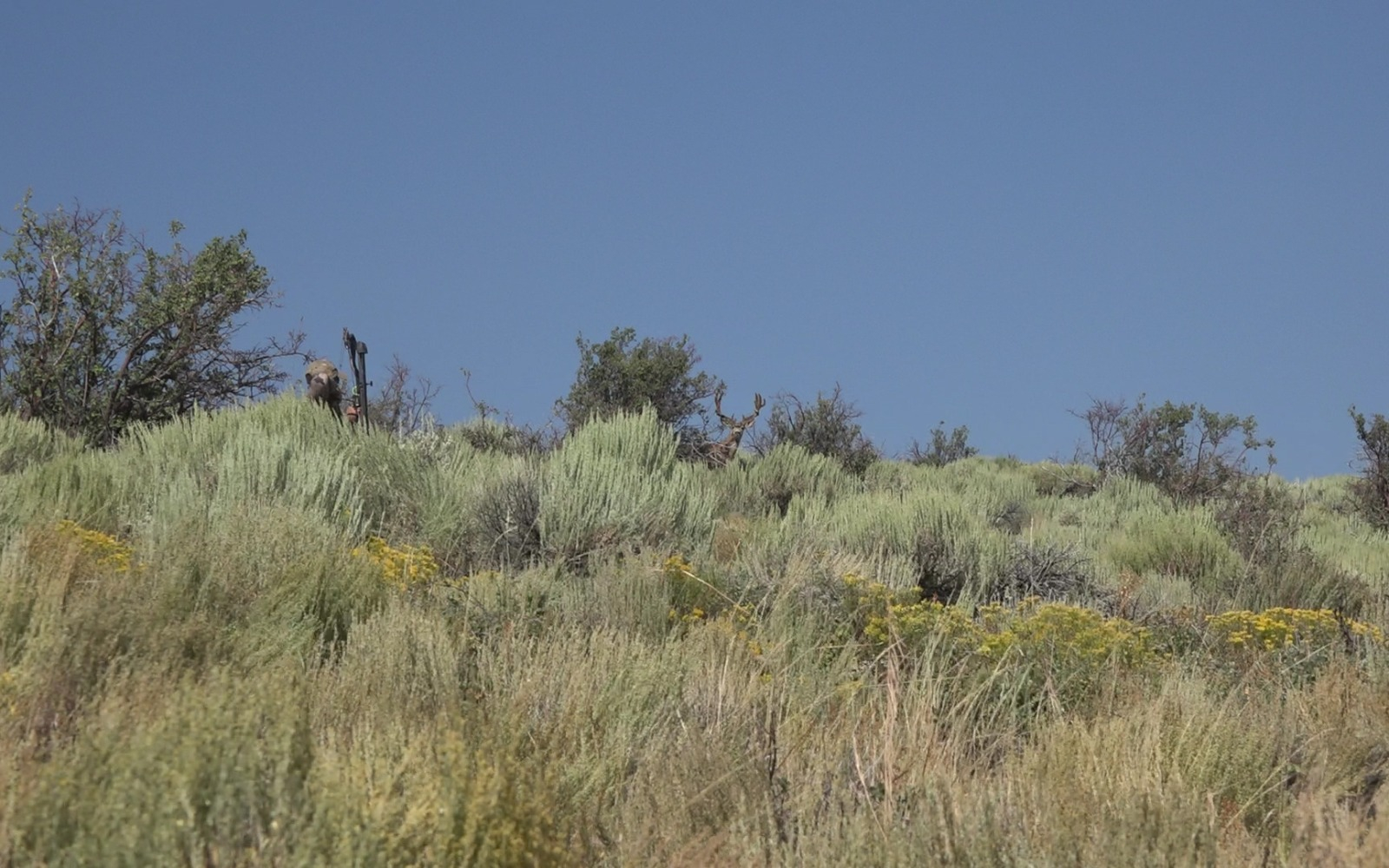
The "lie in wait" style hunting tactics are essentially as old as hunting itself. The tactic is predicated on two things: patience and patterns. Looking at where the blinds were placed revealed that sheep are still using some of the same travel routes today.
I don’t think of many western animals as following patterns. Spot and stalk is my general hunting tactic, but there is something to be said for the success of lie in wait. It is the go-to hunting tactic for many whitetail hunters, but it’s also effective in combination with stalking and ambushing other animals like elk, deer, and sheep.
These primitive blinds played off of patterns year after year, and they would probably still work today. The lesson to be learned is that certain areas and movements can be capitalized on annually. Aside from just a specific pattern, many animals follow overall patterns that can be exploited. I’ve always said that it’s more successful to hunt the same area five times than five new areas once. Discerning patterns help you both immediately and in the future.
This evidence shows that although the same animal may not follow the exact pattern, some animals as a species will follow similar patterns. Making note year after year of what the conditions are like, where the deer or other animals tend to be, and where they like to cross, hide, eat, drink, etc. can show similarities. Being observant of these patterns is the ace up your sleeve.
I apply these hunting tactics to ambush during a stalk or glassing from areas on known travel routes. I spent multiple archery seasons in the same high country basin early in August watching deer and hoping to find a pattern. The first year I did this, it seemed like the deer always did the same thing, just differently. I concluded that they weren't patternable individually, but were more so as a species.
The overall patterns allow me to find areas of higher probability and concentrate on hunting them as opposed to looking for a specific pattern. I also developed a method of placing myself in positions to hunt the general pattern by holding back in the trees and intercepting the deer as they moved in and out of the sage flats in the mornings and evening, which was the overall pattern.
In one particular area, I noticed there was a small saddle that the deer liked to cross over in the mornings and evenings, but it seemed random when they would cross. The deer liked that place, so instead of glassing from my vantage where I could see that spot, I began using that spot as my glassing point. I put myself in a position where I could be glassing everything else from where the deer favored slightly more than other places. Eventually, I took a few deer that used the area, as well as spotting more in adjacent areas.
I’ve used this hunting tactic on other animals and places, picking waterholes or high traffic areas to glass from. If I’m going to sit and glass an area, I try to sit in a place where game may be naturally moving based on observed patterns.
The Silent Stalker
The crunching underfoot and the hard heel strike of a boot is enough to send all animals within earshot running. The rhythmic bipedal gait and hard footfall is unlike other sounds in the wild. It immediately screams predator. But it wasn’t always like this, or at least not until the advent of modern footwear.
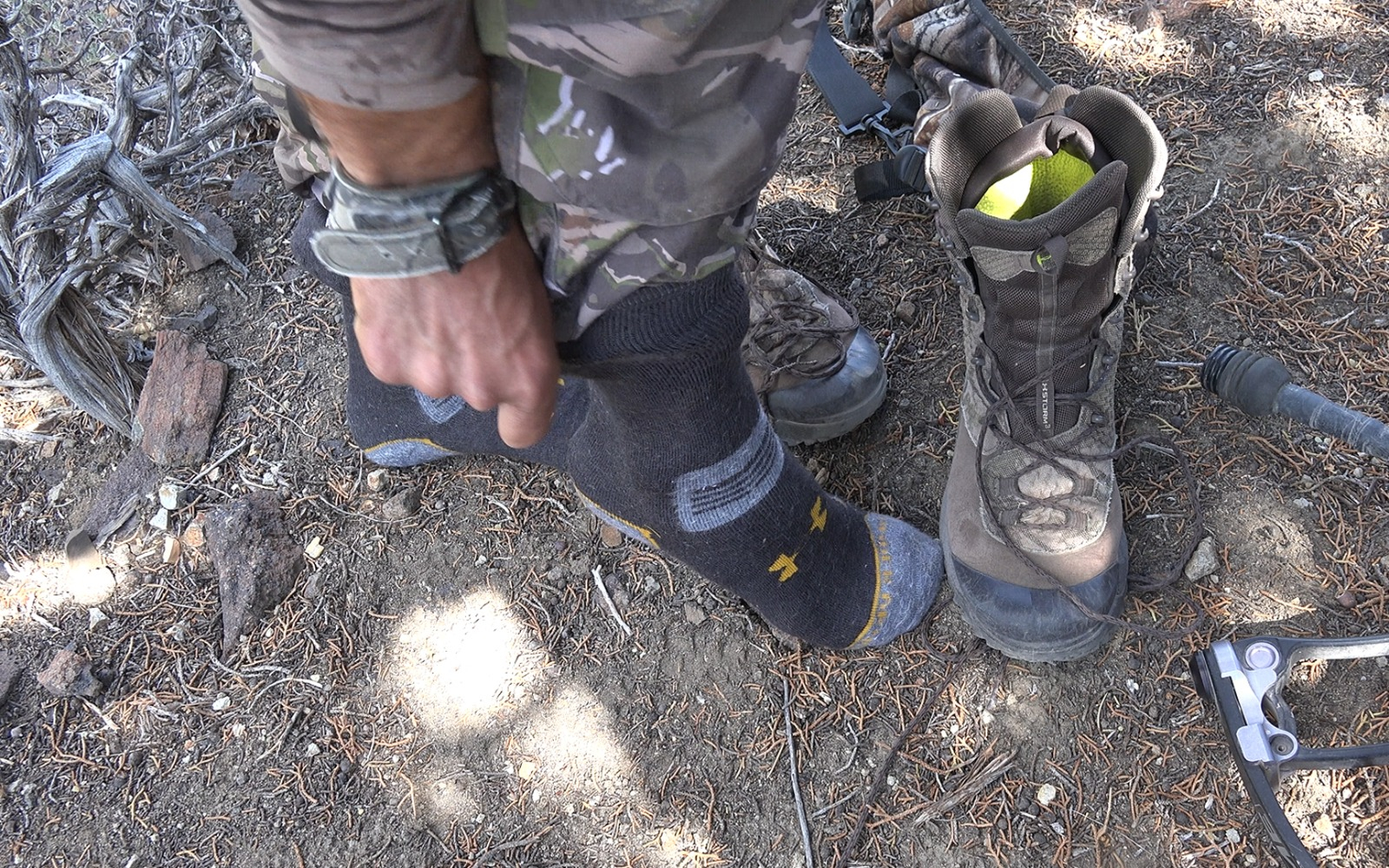
Lately, so much emphasis is placed on stiff, rugged boots - which definitely are a benefit and have their place - but the focus has moved away from the crux of getting close, and that is how to remain quiet. We can learn a lot by looking back and focusing on hunting tactics that worked for those who hunted for survival.
Good boots are a necessary evil. The pads of our feet are sensitive and weak, but that sensitivity is what can make us even quieter while stalking. Native hunters wore moccasins, which provided an adequate balance of protecting their feet while still allowing the hunter to feel the ground and walk quietly.
When archery hunting, many hunters know to remove their shoes for the stalk. I know on my bow hunts, there are very few animals I’ve killed with my shoes on. It’s that important. But sometimes, things change in the stalk - you end up walking for miles to get the wind right or go through sharp rocks and brush that is not much fun in socks.
Because of the downfalls of stalking in socks, I’ve tried numerous methods for remaining quiet and protecting my feet - from an extra pair of socks to a shaved down foam beach sandal between two socks to manufactured stalking socks. I’ve even used those five-finger shoes.
Recently, I decided to try a form of traditional leather moccasins. They proved to be quiet and capable of hiking for miles at a time in rougher terrain. The key is changing the way you walk and staying more on the balls of your feet, no matter the shoeless method you choose. I’ve actually hunted a few weeks in only moccasins, more as a test than anything, and they did prove much quieter, but they take getting used to. Your feet get sore, as you feel everything below them. It’s like walking barefoot, but it keeps thorns and stickers out.
Walking quieter comfortably takes a little bit of conditioning your feet. Even if you’re just removing your shoes for a stalk, things can go wrong, and you may be shoeless a lot farther and longer than expected. Just like breaking in a new pair of boots, you need to break in your feet as well.
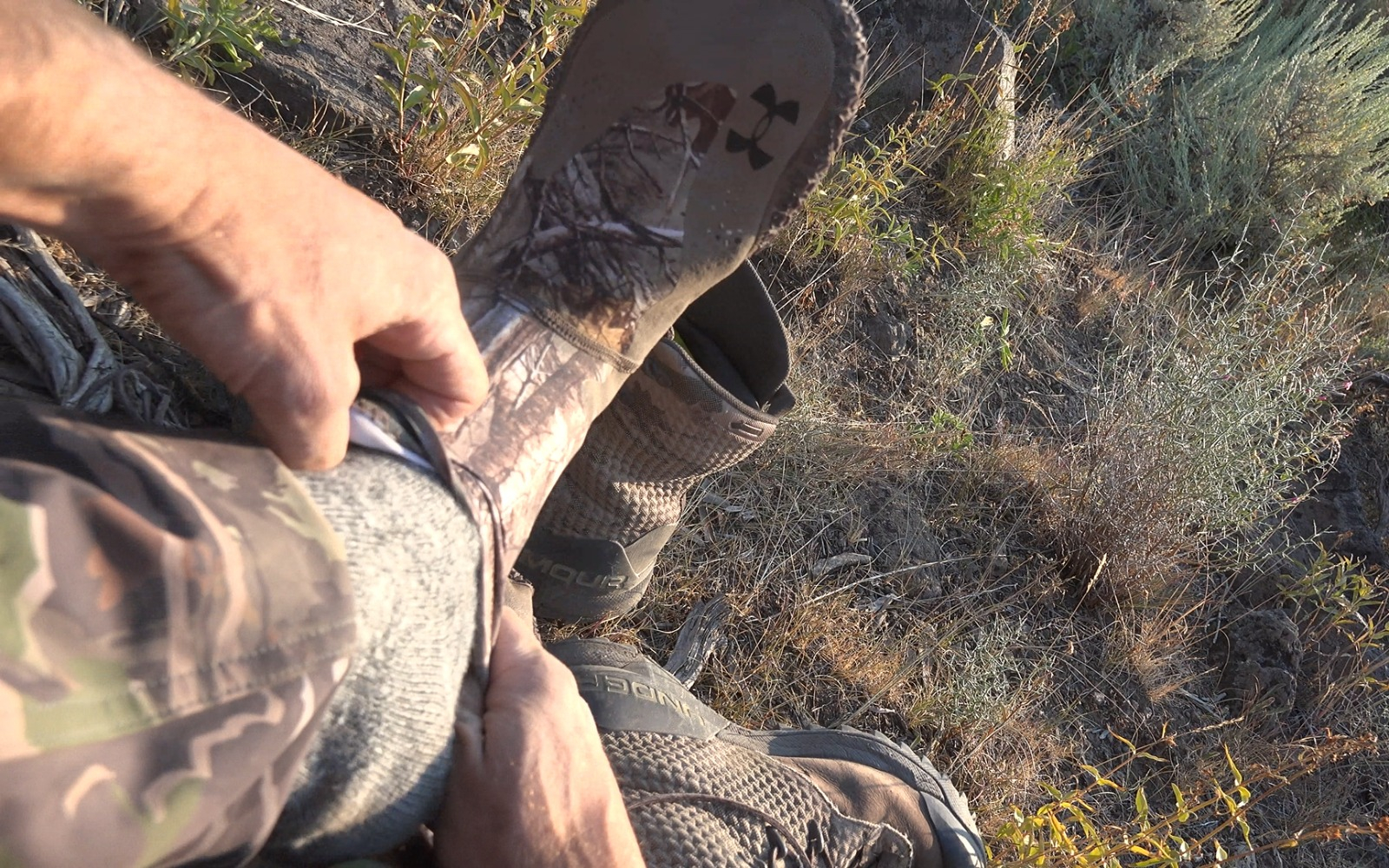
I realized this years ago on an early-season deer hunt. I left my boots with my pack 500 yards from a bedded buck. I stalked in but things didn’t go as planned. Five miles later, I returned to my boots with sore feet. That was the last year I didn’t specifically strengthen my feet for stalking. I now have no problem hunting for miles in my socks or moccasins.
I first start by strengthening the muscles in my feet. I suggest starting out doing something you normally do outside, but in either your socks or barefoot. For me, this is shooting my bow. Walking back and forth to the target is a great starting place.
Next, figure out what your preferred stalking moccasin will be - socks, leather, synthetic – and start going for short walks. Just start building the muscles and toughness in your foot. I’ll even wear my pack while doing this. Then, increase the distance. Not that it’s necessary, but over time I’ve been able to do 15 miles in a day without problems.
From there, I like to strengthen and toughen my feet by going on barefoot hikes or runs. This is the far extreme end of things, but by the end of the summer every year, I’ll have put in a lot of time without shoes. Now I can focus on the stalk, knowing that even if I need to alter my stalk or go up a mountain, my feet can handle it.
If It Ain’t Broke…
There’s a lot to learn from hunters who chased animals of the West as a way of life. Many of the tools may have changed, but the basic principles remain the same. Hunting tactics that worked then are now skills we need to reteach ourselves as modern hunters to become better hunters overall.




